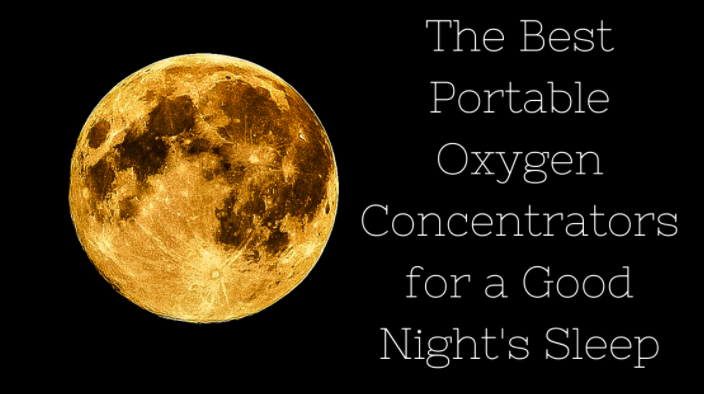
Many people with COPD or other respiratory diseases, are shocked when their doctors inform them that they need to start using supplemental oxygen, and this shock doesn’t go away every time they recommend you rely on supplemental oxygen more and more, until eventually you are using your oxygen device, 24/7.
The shocking part about this, is that, you may feel as if you are building a dependence on the oxygen. However this is not the case.
It is your supplemental oxygen therapy that is giving your blood, bones, and muscles the oxygen it needs to function properly. Without it, your body and organs would be craving oxygen it needs to survive.
Therefore, the tricky part about oxygen therapy is adjusting to it so that you can reap all of the benefits this respiratory therapy has to offer you!
Once you are willing to admit that your supplemental oxygen is saving your life and your livelihood, you can begin to enjoy all of the activities you once did, only now you are either rolling an oxygen tank behind you, or carrying a portable oxygen concentrator while you do so.
How To Get A Full Night's Sleep While Using Oxygen
Once of the best “activities” you likely enjoyed before you had COPD, was sleeping! And you might have noticed, depending on how severe your COPD is, that your complication breathing is affecting how well you sleep. Sleep problems originate in you from a variety of issues, one of which can be reduced oxygen saturation.
Low oxygen can contribute to sleep problems

Many people with COPD and pulmonary fibrosis have problems sleeping, which increases fatigue throughout the day and affects your quality of life.
If you have COPD you are particularly vulnerable to wake during the rapid eye movement, or REM, part of your sleep cycle. REM sleep is the most rejuvenating part of your sleep cycle, but it poses a problem for COPD patients because during REM sleep, your diaphragm controls your breathing, while the smaller accessory muscles are temporarily not functional.
This means that your blood oxygen levels may fall causing you to wake up, disrupting your very important REM sleep.
If this seems to be the case for you, you should ask your doctor about the possibility of using oxygen at night. This may help you to sleep better and improve how you feel in the morning.
.jpg)
If you already use oxygen while you sleep, you might have noticed that you breathe through your mouth, rather than your nose and through your cannulas. This means you still are not getting enough oxygen while you sleep.
Your doctor may diagnosis you with a sleeping disorder if you sleeping complications can be attributed to certain symptoms you experience. If so, your doctor will have you start using a standalone device that will help you get enough oxygen into your blood while you sleep.
CPAP and BiPAP machines for sleep apnea
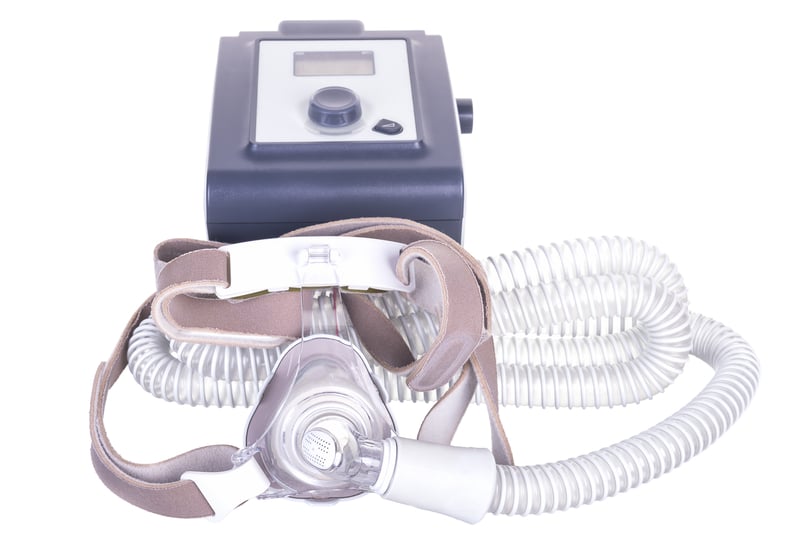
A CPAP machine is a device that compresses ambient air to create pressure for therapeutic purposes normally for sleeping. It is usually used at home to treat obstructive sleep apnea (OSA), but it can also be used in emergency settings in a hospital by a respiratory therapist.
If you have OSA, the main problem is that your throat collapses while you are sleeping, causing you to snore. Even if snoring does not bother you, the repeated collapsing of your throat actually obstructs airflow into your lungs, which can eventually lead to dangerously low oxygen levels in the blood.
Therefore, using a CPAP machine helps keep you throat open allowing oxygen to flow freely even while you are sleeping. If you still have trouble maintaining a healthy oxygen level while you are sleeping, oxygen concentrators can be used with a CPAP device for these certain situations.
So, if you have a lung disease like pulmonary edema or COPD on top of OSA, it might be necessary to add in oxygen to the tubing of your CPAP machine. This will achieve both functions at the same time: increasing the amount of oxygen you receive with each inhalation and also generating enough pressure to keep your throat open.
The other sleeping device you might need to use if you have COPD, obstructive sleep apnea, obesity hypoventilation syndrome, pneumonia, or asthma is a BiPAP machine.
A BIPAP (Bilevel Positive Airway Pressure) machine delivers air flow to your airway at a prescribed pressure similarly to a CPAP machine. However, the difference is that there are two pressures, one for your inhalation and one for your exhalation.The inhalation pressure is set higher to keep your airways open, whereas the exhalation pressure is set lower to assist in an easier more complete exhalation.
It is important to have a oxygen concentrator that is compatible with a CPAP or BiPAP machine, so that if you ever need to use both devices while you sleep you have that option.
Here are the BEST portable oxygen concentrators designed with a great night’s sleep in mind

It's no surprise that the best way to get the best night’s sleep when you also have to use oxygen, is having the best breathing equipment available!
Here are 5 of the best portable oxygen concentrators on the market that will help you get to sleep and stay asleep.
- Inogen one G5 portable oxygen concentrator
- Respironics SimplyGo portable oxygen concentrator
- Oxlife Freedom portable oxygen concentrator
- SeQual Eclipse 5 portable oxygen concentrator
- Inogen One G3 portable oxygen concentrator
Inogen one G5 portable oxygen concentrator
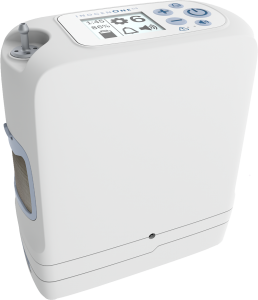
With the Inogen One G5 you will be able to enjoy oxygen delivery benefits at night while you sleep thanks to the presence of Inogen’s intelligent Sleep Mode Technology.
Essentially what this means is that as your breathing rate becomes more shallow as you sleep, the Sleep Mode Technology will go to work by increasing each bolus dose of oxygen.
{{cta('fa8abc2a-1e88-4fa3-82fd-1cb5b9ed43b2','justifycenter')}}
Even if you are a mouth breather, the Sleep Mode Technology is able to detect shallow mouth breaths that are frequent when sleeping. This will then tell the Inogen One G5 to trigger a bolus dose based upon your specific fixed minute volume.
Now, most of our customers are able to use this technology to sleep with the Inogen One G5, however, we highly recommend you first speak with your doctor before using this while sleeping.
Respironics SimplyGo portable oxygen concentrator
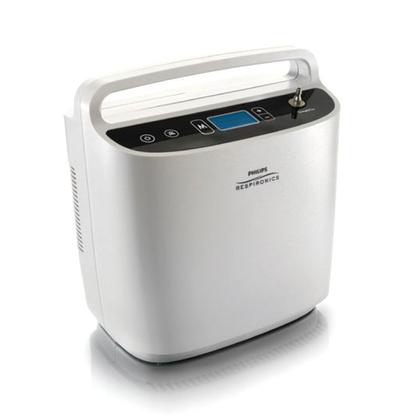
The Respironics SimplyGo portable oxygen concentrator is arguably the best oxygen device for 24/7 use, because it is equipped with both pulse flow and continuous flow settings. Having a portable oxygen concentrator that is designed to run 24/7 has major advantages when it comes to getting a good night’s sleep.
The Respironics SimplyGo is CPAP/BiPAP compatible and it is equipped with both pulse flow and continuous flow oxygen delivery modes to cover you 24/7. It offers pulse flow settings 1-6 and continuous flow settings 0.5-2.0 LPM.
One additional feature the SimplyGo has to offer is its sleep mode technology! Whether you’re on the airplane or relaxing in your chair at home, and you feel yourself dozing off, you can turn sleep mode technology on to ensure your oxygen gets delivered while you are sleeping.
When you turn sleep mode technology on your SimplyGo increases its sensitivity to detect your breath and it softens the pulse flow delivery so it doesn’t wake you up. Don’t worry, if your SimplyGo doesn’t detect a breath or if you breathe through your mouth it will automatically switch back over to continuous flow to ensure you get your required oxygen.
Oxlife Freedom portable oxygen concentrator
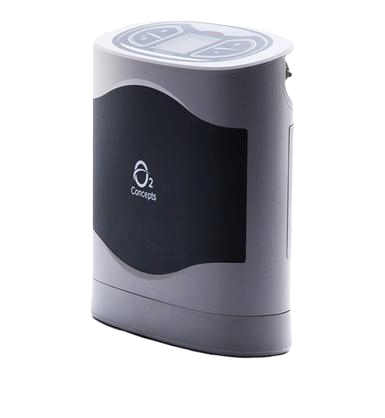
The Oxlife Freedom portable oxygen concentrator was designed to be your 24 hour a day oxygen solution. During the day it’s long battery life and quick recharge time will allow you to spend a busy day running errands or have a fun day with family and friends, or a night out on the town.
When it’s time to sleep the quiet operation of the Oxlife Freedom won’t disturb your rest or your companion’s. The intelligent delivery system ensures that you stay properly saturated throughout the night. The machine senses as breathing gets shallower or slower and will adjust dosage for proper titration.
SeQual Eclipse 5 portable oxygen concentrator
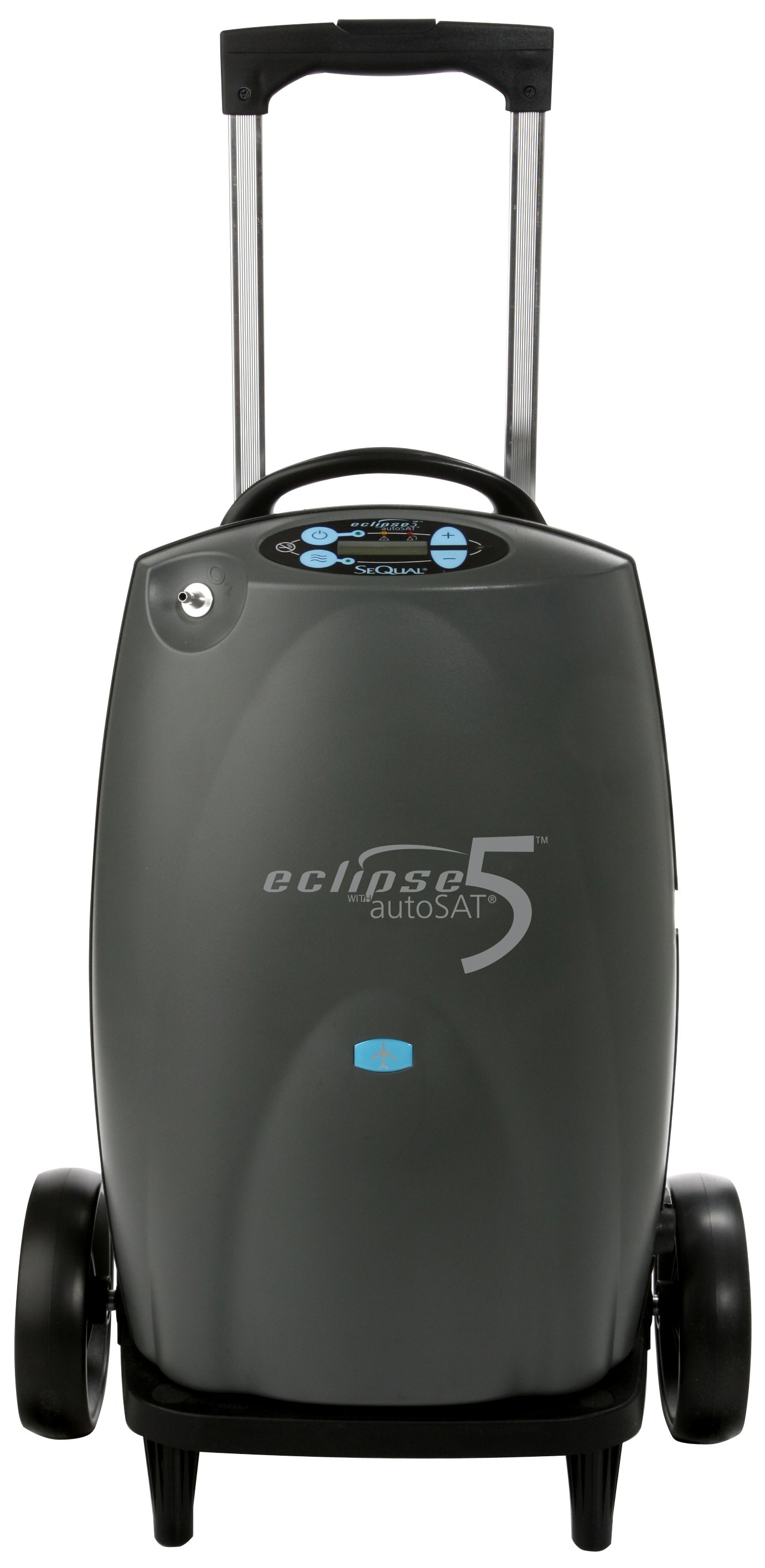
The SeQual Eclipse 5 portable oxygen concentrator offers both continuous and pulse flow settings. It will go up to a setting of 9 on pulse and it will go from 0.5-3.0 LPM on continuous flow.
It can be used 24/7 365 days a year and it is CPAP/BiPAP compatible so you can use it while you sleep if you need to.
Inogen One G3 portable oxygen concentrator
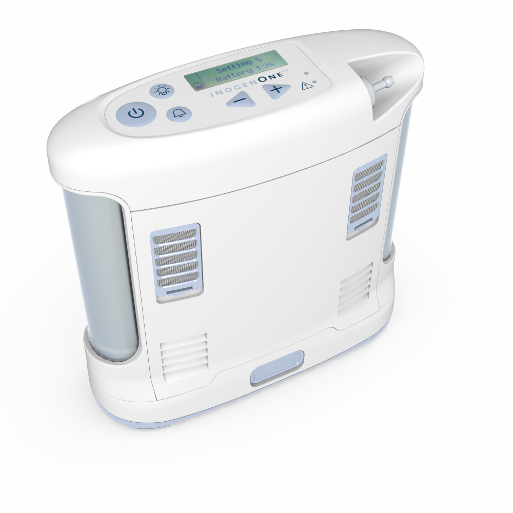
The Inogen One G3 portable oxygen concentrator, weighs 4.8 pounds and offers up to 8 hours of battery life, the Inogen One G3 has been one of the most popular portable oxygen concentrators on the market for over two years!
We could talk about this unit’s small, lightweight, and durable design, however, it also gives patients 24 hours a day 7 days a week of reliable oxygen delivery.
Despite the fact that the Inogen One G3 is a pulse flow portable oxygen concentrator, the majority of oxygen patients can still use this machine for nighttime oxygen delivery! Just like the Inogen One G2, the G3, it is equipped with Intelligent Delivery Technology.
Inogen’s Intelligent Delivery Technology ensures that your oxygen is delivered within the first 400 milliseconds after your concentrator detects your breath. This almost guarantees that you’re receiving the entire bolus dose of oxygen delivered by your G3.
Along with delivering oxygen within the first 400 milliseconds, the Intelligent Delivery Technology responds to your breath rate! This feature is what allows you to use your Inogen One G3 while you sleep even though it doesn’t offer a continuous flow.
When you are sleeping your breathing rate decreases. As the Intelligent Delivery Technology monitors your breath rate, it will automatically increase or decrease the amount of oxygen per bolus dose depending on the oxygen setting and your breath rate.
For example, if you are breathing at a rate of 10 breaths per minute the Inogen One G3 will double the amount of oxygen per bolus dose than if you were breathing at 20 breaths per minute. This is to ensure you are getting your required oxygen.
One of the big reasons pulse flow portable oxygen concentrators aren’t recommended to use at night while you sleep is that they don’t detect mouth breaths. The Inogen One G3, on the other hand, will be able to detect shallow mouth breaths! So as long as you don’t need a CPAP or BiPAP machine at night, the Inogen One G3 should work for your nighttime oxygen delivery system.
5 habits to practice for better sleep
On top of having the best breathing equipment, it is also important to practice these lifestyle tips that will help you get to sleep faster and staying asleep throughout the night
1. Try to get 30 minutes of exercise in during the day
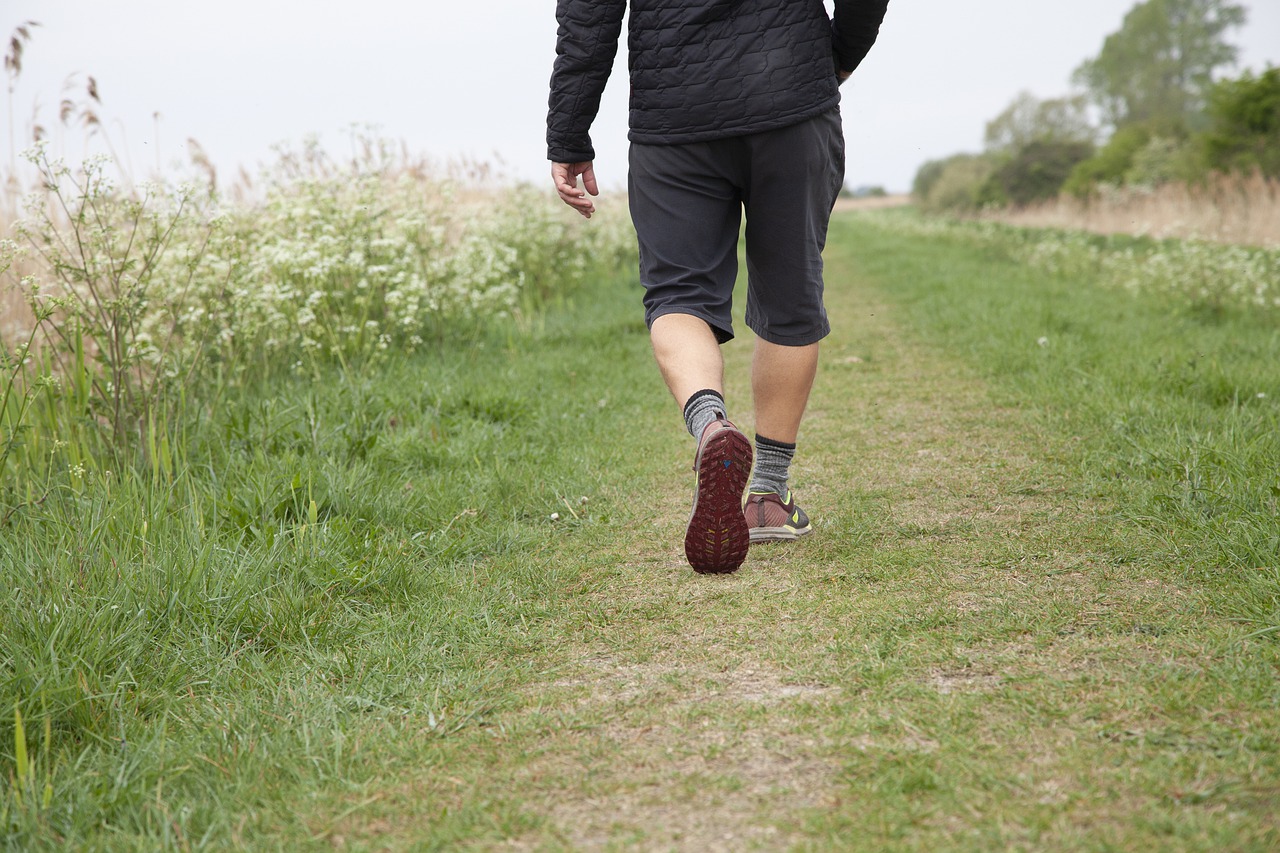
Exercising during the day will not only improve sleep quality but also sleep duration at night. Exercise is one of the best ways to treat your COPD or other respiratory problems because it straightens your lungs and they are able to function better during the day and night.
As few as ten minutes of aerobic exercise, such as walking, cycling or taking a tai chi class, can dramatically improve your sleep quality.
The best way to see results fast, is to exercise on a regular basis.
2. Avoid carbonated beverages late at night.

Soda and caffeinated beverages before bed are obviously not going to help you get to sleep faster, but what you might have not known is that carbonated drinks in general are not good for sleep.
By drinking carbonated beverages, your body will produce gas that pushes on your diaphragm, making breathing more difficult.
For that reason, it’s a good idea to avoid carbonated beverages before bed. This includes sparkling water for hydration or a glass of ginger ale to help settle your stomach.
3. Establish a sleeping routine
Try to go to bed and wake up around the same time every day. This means weekends, too! If you need a nap in the middle of the day, you can also add this into your sleep schedule.
Try your best to be strict about this! When your body has a sleep cycle to rely on, you can more naturally achieve sleep, even if you are sleeping with an oxygen concentrator during the night.
4. Designate your sleeping spot
As part of establishing a sleeping routine, you can also add certain bedtime activities into your schedule so that you body can adjust to when it is time to fall asleep. For example, you can start reading before bed and once this is a regular thing, your body and mind will calm realizing it is time to sleep.
It’s important that you designate your bed – and bedroom – for sleep. Do not spend time working or being actively awake in your bed.
5. Practice techniques for clearing your airways before bed
.png)
Techniques for airway clearance are something you can practice throughout the day, especially after meals; however, this is especially useful for getting a good night’s sleep. Airways clearing techniques may help you more naturally maintain oxygen levels throughout the night, whether or not you are sleeping with an oxygen concentrator.
One technique is controlled coughing for COPD.
Sleeping and COPD
There are a lot of daily struggles that come with having a disease like COPD and this disease is not going away.
The best way for you to live with COPD, is to manage and treat it with care and attention. This process starts and ends with sleeping! The more sleep you get, the better you feel and the more energy you have to exercise, eat healthy, and reach out to loved ones.
{{cta('b59df0c1-c4de-47a8-8e1c-0d33d4b414aa','justifycenter')}}
One of the biggest mistakes you can make with COPD, is living with restless nights because of how easily you can solve this problem. If the issue is lack of oxygen, you should reach out to us at LPT Medical so that we can help you find the best oxygen concentrator at the best possible price that will fit your oxygen requirements and get you the sleep you need to operate productively during the day.
You can start by calling us at 1-800-946-1201 and speaking with one of our respiratory specialists.
If you already have an oxygen concentrator, and you still have trouble sleeping, try adjusting to a strict sleep scheduled and working out at least 10 minutes a day.
A combination of the right sleeping equipment, oxygen therapy, and daily habits will help you get to sleep you need. You will notice after a few weeks with sufficient sleep, your mood, and overall wellbeing will improve!

